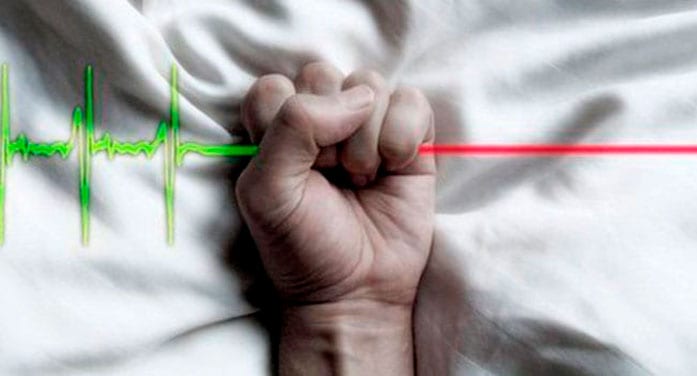 Although euthanasia was illegal in Canada until five years ago, our country is on the verge of having the most liberal euthanasia laws in the world.
Although euthanasia was illegal in Canada until five years ago, our country is on the verge of having the most liberal euthanasia laws in the world.
Canada has shifted gears from a culture of life to one of death and is putting its foot to the pedal to accelerate the process with disturbing speed.
How we got here is remarkable. The 2015 Carter decision by the Supreme Court of Canada reversed its own precedent set in the Sue Rodriguez case in 1993.
Gloria Taylor, one of the plaintiffs in the Carter case, was diagnosed with amyotrophic lateral sclerosis (ALS), just like Rodriguez. Yet, through interpretive gymnastics and a disregard for precedent that should have made our justices blush, they unanimously reinterpreted euthanasia as an extension of life, liberty and security.
In the 2015 decision, the court said the ban on euthanasia “affects [Taylor’s] right to life because it may shorten her life. Ms. Taylor’s reduced lifespan would occur if she concludes that she needs to take her own life while she is still physically able to do so, at an earlier date than she would find necessary if she could be assisted.”
FROM THE ARCHIVES: How MAID aids discrimination against the disabled by Keith Dow
Voila – providing euthanasia became a life-extending medical service.
Before the five-year review of the bill could even occur, a Quebec judge extended euthanasia to the disabled. As the federal election campaign kicked off in September 2019, a Quebec Superior Court justice decided it was unconstitutional to require a “reasonably foreseeable” death before administering medically assisted dying.
Who wanted this?
Plaintiff Nicole Gladu, 73, had a paralyzed left side and scoliosis that resulted from childhood polio. The other plaintiff, 51-year-old Jean Truchon, had spastic cerebral palsy. “He can no longer live on his own. … He says he has been dead since 2012,” the Superior Court justice wrote.
If he was already dead, why did he need euthanasia? And if he was alive, shouldn’t Canadian institutions reaffirm the value of his life?
“People with disabilities have been told, with this decision, that simply having a disability is reason enough for us to want to die,” said Amy Hasbrouck of the Council of Canadians with Disabilities, which also intervened in the case.
The provincial judge gave the federal government just six months to comply with the legislation, an impossible deadline that was later extended. Instead of appealing the decision, the federal government introduced flawed legislation that went beyond what the court required.
Bill C-7 eliminates the 10-day waiting period between when someone with a foreseeable death could request euthanasia and when they could receive it. It also lowered the number of required witnesses from two to one. The result is that if the terminally ill have a bad day, they could make it their last.
FROM THE ARCHIVES: We have to understand that MAID still means homicide by Peter Stockland
The Senate passed two amendments, one of which permitted euthanasia for incompetent people who had requested death in an advanced directive.
The second amendment approves euthanasia for those with mental illness. In another example of kill-to-preserve-life, the sponsoring senator stated that jurisdictions that legalized euthanasia saw lower suicide rates.
That’s fiction, according to anti-euthanasia advocate Alex Schadenberg. He points out that Belgium has the highest suicide rate in Western Europe, while the Netherlands has had rising suicide rates over the past several years. Yet, the suicide rate fell in most of the continent.
In response to the court decision, the legislation expands euthanasia to the disabled; they have to wait 90 days. Schadenberg finds it conceivable, if not likely, that a future court will decide this is discriminatory. If the terminally ill can be killed the same day they ask, so should the disabled, some judge will say.
The amended C-7 would give governments 24 months to consult and work out parameters for medically assisted in dying (MAID) for the mentally ill. Yet, as we’ve already seen, any misguided judge could declare it discriminatory to refuse it on the same grounds as anyone else or even make them wait an extra day.
Teenagers might be next. The Canadian Council of Academies dedicated an expert working group to examine MAID for “mature minors” in December 2018 and issued a 220-page report. In an age where teenagers can get puberty blockers, cross-sex hormones and abortions without parental consent or knowledge, would euthanasia be much of a stretch?
If worse comes to worst, a Canadian teen who feels hopelessly despondent could check themselves in and be killed the same day. Parents would only find out when it was too late, their tears and outrage muted by a government, judiciary and academic establishment that insisted it was the right thing to do.
God help us.
Lee Harding is a research associate with the Frontier Centre for Public Policy.
Lee is one of our Thought Leaders. For interview requests, click here.
The views, opinions and positions expressed by columnists and contributors are the authors’ alone. They do not inherently or expressly reflect the views, opinions and/or positions of our publication.
© Troy Media
Troy Media is an editorial content provider to media outlets and its own hosted community news outlets across Canada.



Excellent post, so clear and well-written … THANK YOU!!